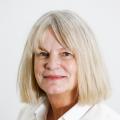Pottery fragments excavated near a church in St Aldate’s have shown the first-ever evidence of people following a kosher diet.
The unearthed pots showed that only kosher food, and no pork, had ever been cooked in them.
St Aldates Church was the centre of Oxford’s Jewish neighbourhood in the 12th and 13th century after William the Conqueror invited Jewish people in northern France to settle in England - possibly so they could pay taxes to fund his wars.
Recent excavations by Oxford Archaeology, ahead of some development works, revealed evidence of two houses which the 800-year-old Doomsday Book suggested belonged to two Jewish families.
Amazingly it was able to show that one was owned by Jacob f. mag. Moses and called Jacob’s Hall, and was said to be one of the most substantial private houses in Oxford, and the other house was owned by an Elekin f. Bassina.
Jacob’s Hall was one of five enormous stone mansions belonging to wealthy Jewish magnates that once stood on both sides of St Aldate’s which was known as Great Jewry.
It had a large underground vaulted chamber which may have served as the synagogue until 1228 and Jacob’s Hall itself survived until 1644 as a student hostel belonging to Merton College.
During the excavations, archaeologists found one surviving feature. It was a stone-built structure which was thought to be a latrine which would have been both a toilet and a rubbish bin.
Inside they unearthed a remarkable amount of animal bones, mainly goose, but absolutely no pig bones. This hinted that the inhabitants followed a kosher diet. There were some fish bones but only species such as herring which are kosher.
Kosher is one of the oldest known diets in the world and, for an observant Jew, keeping to the dietary laws (known as Kashruth) is a fundamental part of their faith.
This evidence of a Jewish diet was the first time it had been identified in British archaeology and just the third time in medieval Europe.
Carl Champness, fieldwork project manager at Oxford Archaeology, said: “The team used a combined chemical and isotopic approach to identify and quantify the food residues absorbed into medieval vessels found at the site.
“Their findings, showed that the possible Jewish vessels were only used to cook meats from cattle, sheep and goat. Evidence for pig processing was entirely absent.”
He said that this was in spite of evidence that other locals in Oxford 800 years ago did eat pig. Pottery and animal bones both from a contemporaneous site at Queen’s College, outside Oxford’s Jewish quarter, and from the earlier Anglo-Saxon period at St Aldate’s show it.
Not only were there no traces of non-kosher food in the Jacob’s Hall pottery, there was no evidence of meat and milk ever being used.
Lead author of the report, which was published in the journal Archaeological and Anthropological Sciences, was Dr Julie Dunne from Bristol University’s school of chemistry.
She said: “This is a remarkable example of how biomolecular information extracted from medieval pottery and combined with ancient documents and animal bones, has provided a unique insight into 800-year-old Jewish dietary practices.”
The study opens the way for similar investigations in the future.
Edward Biddulph, who managed the post-excavation project at Oxford Archaeology, said: “The results of the excavation at St Aldates and Queen Street have been astonishing, not only revealing rare archaeological evidence of a medieval Jewry in Britain, but also demonstrating the enormous value of carefully focused analysis.”
Dr Lucy Cramp who is a senior lecturer in the Department of Anthropology and Archaeology at Bristol, and is a co-author of the study, added: “Human dietary choices are based on far more than availability or caloric content.
“What’s really exciting is how this evidence for dietary patterns in Medieval Oxford informs us about the diversity of cultural practices and beliefs that were present in the past, as today.”
In 1290, King Henry III’s son King Edward I ejected all Jews from England. Up to 40,000 Jews were forced to flee not to return until Oliver Cromwell formally invited them back into England in 1656.
The results of the excavation will be published in a new book The Archaeology of Oxford in the 21st Century in December. Produced by the Oxfordshire Architectural and Historical Society (OAHS), it presents the results of 11 excavations carried out by Oxford Archaeology within Oxford city centre.
City Council archaeologist David Radford said: “This volume shows the breadth of new information coming out of developer-funded archaeology and is especially exciting for the insights it provides into life in Oxford medieval Jewry.”








Comments: Our rules
We want our comments to be a lively and valuable part of our community - a place where readers can debate and engage with the most important local issues. The ability to comment on our stories is a privilege, not a right, however, and that privilege may be withdrawn if it is abused or misused.
Please report any comments that break our rules.
Read the rules here